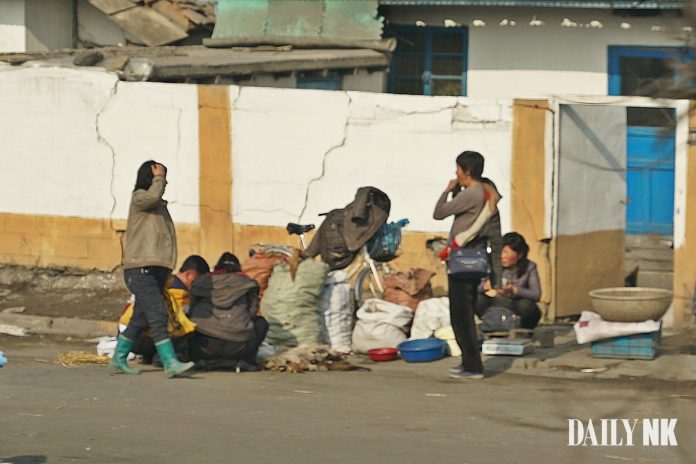
Grain prices in North Korea’s markets have been falling after North Korean authorities recently began selling rice and corn through state-run food shops.
Daily NK’s regular survey of market prices in North Korea found that a kilogram of rice cost KPW 6,000 in Pyongyang, KPW 6,100 in Sinuiju and KPW 6,350 in Hyesan. Those prices represent a 3% to 7% fall from the previous survey on July 26.
North Korean rice prices have been continuously increasing since January, when a kilogram of rice cost between KPW 4,000 and KPW 5,000. In late July, the price crossed the KPW 6,000 line nationwide.
The most pronounced rise in the price of rice was in Hyesan, Yanggang Province, where it approached the KPW 7,000 line late last month, hitting KPW 6,800. Since the start of August, however, the price of rice in the city has fallen back below around KPW 6,500.
The price of corn — the preferred staple of North Korea’s low income earners — also appeared to be falling slightly nationwide.
As of Aug. 8, the market price of a kilogram of rice was KPW 2,980 in Pyongyang, KPW 3,100 in Sinuiju and KPW 3,200 in Hyesan. In the case of Sinuiju, the price hardly moved from late last month, but in Pyongyang and Hyesan, the price had fallen 4% and 6%, respectively.
The modest fall in grain prices this month after a period of prolonged inflation appears due to government sales of grain to the public through state food shops. The government began sales of grain in the shop from early August.
In fact, since the start of August, the government has carried out sales of rice and corn through state food shops in Pyongyang, Sariwon (North Hwanghae Province), Haeju (South Hwanghae Province), and Pyongsong (South Pyongan Province). Given that prices fell across the board in Yanggang Province and North Pyongan Province as well, it appears state-led grain sales were carried out in other major cities, too.
According to a Daily NK source in Pyongyang, a kilogram of rice cost between KPW 4,000 and KPW 5,000 at state food shops in early August, while a kilogram of corn cost around KPW 1,500.
The source said the rice and corn sold through the food shops originated in China, not North Korea. This suggests that North Korean authorities may have distributed grain imported from China.
Market prices of rice and corn typically fall when they are sold at state food shops at prices 30% to 50% less than can be found in markets. That is because the sale of grains at state food shops lead to a fall in demand for the grains in local markets, and the rice people purchase at the state food shops sometimes makes its way into the markets.
However, state food shops sell rice, corn or vegetables just once a month due to grain supply shortages, which means that the fall in market prices should only be temporary.
Accordingly, a bit more time is needed to see if the recent fall in grain prices will continue, or if prices will once again skyrocket by the autumn with the full-fledged start of the fall harvest.


















